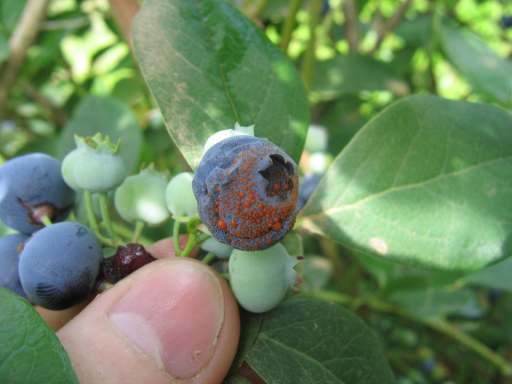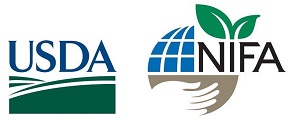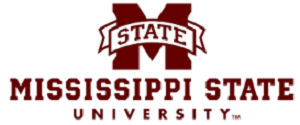
Anthracnose fruit rot is among the most destructive and widespread fruit disease of blueberries across the United States, impacting both yield and overall fruit quality. This is echoed by the results from a published VacCAP survey (Gallardo et al., 2018 ) from nearly 400 stakeholders across the blueberry industry, which revealed that anthracnose fruit rot, as well as other fruit quality traits, is among the top industry concerns. Thus, a goal from a collaborative project between Dr. Patrick Edger, VacCAP Co-PI, and collaborators, including Dr. Tim Miles, small fruit pathologist, and members of their labs at Michigan State University was to develop a more cost effective and environmentally conscious solution to combat anthracnose fruit rot.
“Anthracnose fruit rot, caused by the fungal pathogen Colletotrichum fioriniae, significantly impacts strawberry, grape, and blueberry production worldwide. In blueberries, anthracnose is highly prevalent and widespread and is the most important pathogen, affecting fruit at both pre- and post-harvest stages,” Sam Thompson, PhD student in the Miles lab, said. “This infection ultimately results in considerable damage to fruit structure and quality, leading to significant losses in highbush blueberry production.”
Fortunately, natural variation in resistance against anthracnose fruit rot was identified to be present among cultivars.
“This enabled us to truly investigate this important trait in cultivated blueberry, which not only permits us to gain valuable insight into the underlying genetics of resistance, but also to develop molecular markers that will enable breeding programs to more easily select and release superior cultivars in near future,” Dr. Edger said.
“We sought to identify markers that breeders can use to predict resistance against anthracnose. We identified three genomic markers and one metabolite marker significantly associated with anthracnose resistance in blueberry,” Mackenzie Jacobs, a PhD candidate in the Edger lab, said.
In summary, three loci on different chromosomes—17, 23, and 28—were found to be significantly associated with resistance to anthracnose in fruit. Metabolite profiling and analysis was also performed, and a metabolite with characteristics of a quercetin rhamnoside (flavonoid) was found to be significantly more abundant in resistant fruits although some variation was observed in both resistance and susceptible individuals. To gain further insight into the underlying resistance mechanism, gene expression analysis was performed on inoculated fruit across several days following infection. These analyses revealed significant associations between differentially expressed genes and some metabolic pathways including flavonol biosynthesis and genes previously associated with pathogen resistance.
This work has the potential to make a large impact on the blueberry industry.
“This is an early step in the journey of producing more resistant cultivars to anthracnose fruit rot,” Jacobs said. “Giving breeders the ability to screen for resistance via genetic and metabolite markers can shave years off of the process of determining which lines to move forward with.”
The original paper is available here: https://doi.org/10.1093/hr/uhad169
This research was supported by the United States Department of Agriculture – AFRI #2018-67013-27592 and SCRI #2019-51181-30015.













